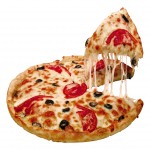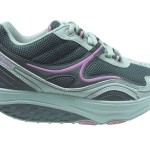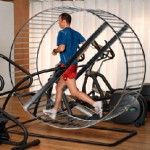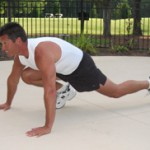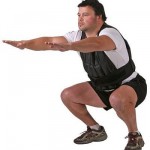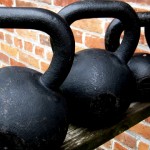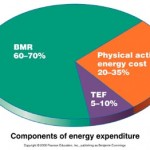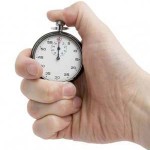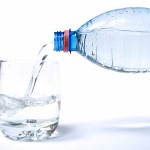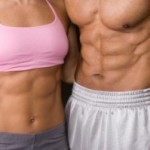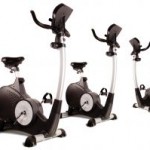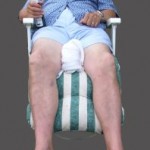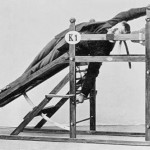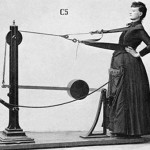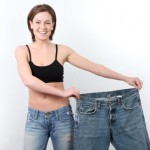Welcome Back!!
Here is part 2 of our look at persistent but Oh so wrong Fat loss myths…
Myth: You should do very high reps to failure for fat burning…
Whilst there is a certain faux logic to this idea it is plain wrong. Research shows that weight lifting / resistance training burns calories through muscle fibre recruitment. The more fibres recruited, the more energy you burn. So the key to cranking up your metabolism is to recruit as many muscle fibres as possible with each set.
Lifting light weights, even for 100 reps, does NOT recruit many muscle fibres. When you do high rep training you’re only working the smallest, weakest muscle fibres – these will have little appreciable impact on boosting your metabolism.
By the same token lifting for maximum muscle fibre recruitment is brutally hard and not sustainable for most people long term. The answer is to use a mix of high weight low rep (3 – 6) training with the body builder rep range of moderate to heavy weight for 8 -12 reps. This way you recruit lots of muscle fibres but don’t drive yourself into the ground every time you train.
You can go hard, or you can go long. Going hard burns fat & build strength.
Myth: You don’t need to get stronger to get leaner.
This is really a follow on from the myth above – the stronger you are, the more muscle fibres you can recruit when you exercise. Stimulating as many muscle fibres as is sustainable with each set will ramp up the metabolic cost of your workouts. (Metabolic cost is a measure exercise scientists use to determine how many calories you’re burning up through exercise. It is also called TEA – Thermic Effect of Activity)
The higher the metabolic cost, the better for fat loss. The stronger you are the faster you can move and research shows that fast movement with heavy to moderate weights really gets the fat fires burning. Anyway – ever seen a fat sprinter?
Myth: All calories are equal – so eat less and you’ll lose weight…
This is correct all calories are equal – if you are looking at them as measurement of energy. (a calorie is the amount of energy required to raise the temperature of 1 litre of water 1 degree centigrade)
However if you are looking at them as food source types then – all calories are NOT equal. What is going to put more fat around your middle – eating steak & salad for a week or eating the same number of calories but as Hot Dogs, Fries & Ice cream? No prizes for guessing the answer here…
This is the kind of claptrap that far too many doctors & dieticians & nutritionists put out there – despite the mountains of peer reviewed, long term studies that all show that a calorie is not just a calorie. The source of the calories is important especially from a metabolic viewpoint.
Carbs, Fats & proteins are the macronutrient groupings (some folk add water to this list and I have friend who is convinced that alcohol belongs here – it doesn’t) and they all have a different effect on your metabolism.
The Thermic Effect of Food – how many calories your body has to use to process food – is different for each macronutrient. For Fat it is 2%, for carbs (depending upon type – fibrous or not) it is 4 – 6% and for protein it is a whopping 30%. That’s like getting a 30% discount on the calorie value of each piece of protein you eat.
It is the nutrients in the food we eat, not the calories, that stimulates (or slows) our metabolism. When you cut calories you slow your metabolism down because it is getting less of the nutrients it needs. Things like amino acids, vitamins, minerals, essential fatty acids and so on. In all likelihood if you are eating the typical Western diet then your body is already slow metabolically because this diet is calorie dense but nutrient sparse.
If you eat less your body preserves fat and begins to burn muscle for food. Result – less muscle which means a slower metabolism. You can avoid this by simply choosing your calorie sources better. Replace low-quality foods like as bread, pasta, and rice with nutrient-dense foods such as berries, green vegetables, eggs and protein like fish.
Myth: You must eliminate entire food groups to see results.
In a word Bull!
A common misconception is that certain food groups should be avoided in order to lose weight. This is wrong and usually relates to either fat or carbs. The truth is that there are ‘good’ & ‘bad’ fats & carbs and the only elimination of foods that you indulge in should be to remove the ‘bad’ types of each.
Processed, denatured carbs like flour, cakes, cookie, commercial fruit juices, sweets, etc should be taken out of your diet or at least severely cut back. Any food that contains Trans fats (look for ‘partially hydrogenated oil’ on the food labels) has to be taken out of your diet and frankly anything you can identify as having High Fructose Corn Syrup (a cheap sugar but one which is processed differently in your body and leads to belly fat) should not even get into your trolley at the supermarket.
Eliminating all fats is also a furphy as excess calories from ANY nutrient source can and will be stored as fat by your body. So cutting out all fats just stops your body getting access to needed fats like Omega 3 fatty acids. This in turn has a number of anti-health effects. In truth every food group has its own benefits for example, carbohydrates are your body’s preferred energy source and fruit & veges deliver vitamins, minerals antioxidants, phytonutrients and more besides – all important for your well being. Protein provides the building blocks for your body – and the amino acids that make up protein is vital for bodily repair. Fats is important for joint lubrication, hormone creation and use, hair, nail & skin health.
It is very necessary to eat all macronutrients in proper proportion to promote weight loss.
Myth: You need to work out hard each day to see results.
Nope – fat burning, muscle growth and bodily repair all take place after you work out. The post-exercise period is when the benefits of working out accrue. This takes time and your body needs a mix of stress from exercise and periods of recovery so it come back fitter 7 stronger for the next round of exercise. Working out intensely every day does nothing more than drive you into the ground, reduce your recovery ability and slows your metabolism.
Even worse, overtraining leads to your body releasing even more fat-storing hormones as a stress response. Cortisol has its uses but too much of it is a bad thing indeed if you are looking for fat loss….Lastly, being overtrained zaps your motivation and makes you more susceptible to illness and injury.
So train 4 – 5 times a week, no more.
Myth: There is a Magic Product that delivers Quick & Easy Fat Loss
Weight loss scams have been around forever and show no signs of going away. The sad but simple truth is that a strategically sound mix of diet and exercise is the only proven way to change your body composition and recondition your metabolism so it stays that way.
If you watch either late night or early morning TV you will see ads for all sorts of Pills, Powders, Potions, Fasts, Cleansing liquids, exercise tapes and miracle delivering fat loss machines that will completely transform your body in just a few weeks!
I like the 8 minute Abs one in particular – an abdominal 6-pack in only 8 minutes per day. Wow sounds great then I thought why 8 minutes? Why not 6 or 9 minutes or even 3? Although I have to say for sheer audacity and flimflam dressed up as pseudo science the Shake Weight and Toning Shoes come up close seconds…
The underlying message is that you can get in shape by being lazy and that if you don’t get the results they promise then it is your fault. It also appears that the money-back guarantee they offer is a safe bet for them – less than 2% of people return these useless gadgets for their refund. Either they can’t be
bothered packing it up or they are too embarrassed – after all most folk know that these things don’t work.
The supplement industry is even worse. In most countries – particularly the US of A, supplement companies are not regulated and don’t have to prove their claims. This is completely opposite for the pharmaceutical com
panies who have to prove the claims they make ( and we know how trustworthy they have proved to be despite government oversight and regulation…)
Pretty much supplement companies can tell you that their products will enable you to lose weight, get stronger, improve your heart health, think more clearly, perform better, reverse aging, get that loving feeling more often and their products don’t actually have to deliver a thing.
By feeding off people’s fears and vanity, by exploiting consumers and weak laws many of these companies are no more than clever marketers.
Folks, there is no easy way to get the body of your dreams if your idea of easy is just swallowing a pill in between handfuls of fries. There is no easy way to work out if your idea of working out is to lie down on some machine looking for the ride of your life…and in 5 minutes a day.
In today’s society where the emphasis is I want it NOW!, the truth is too damn simple and too damn hard for most folk to follow – Work out hard and eat right just doesn’t sound snappy enough. Thing is it is still the closest thing to the magic pill and machine we’ve got.
See you next time…tell your friends about us!!


